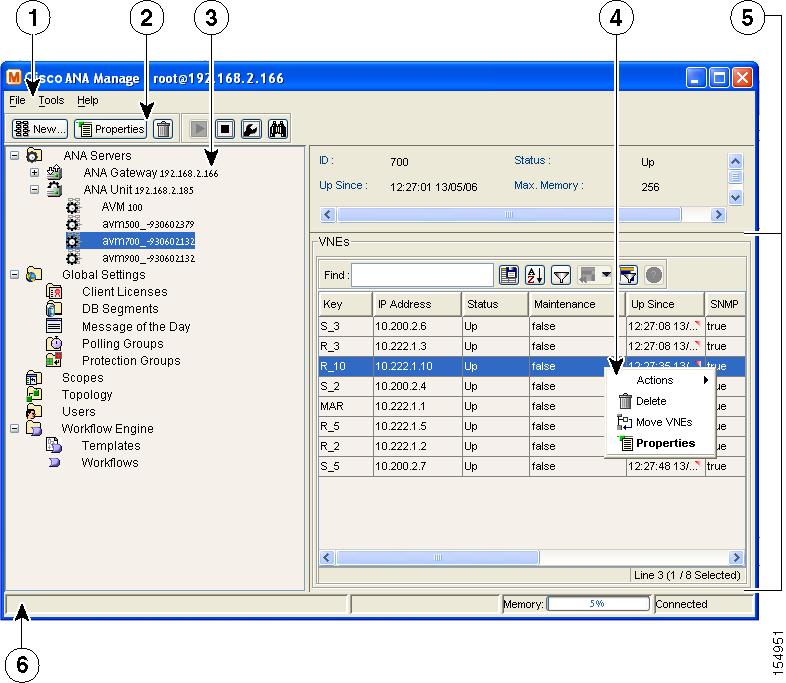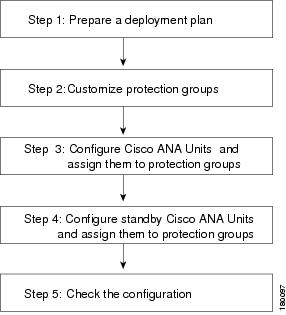

Table Of Contents
Getting Started
This chapter provides instructions for launching the Cisco ANA Manage application. In addition, it describes the steps that must be performed to configure high availability in the Cisco ANA fabric and provides cross-references to the relevant sections in this user guide:
•
Starting Manage—Describes how to open the Manage application.
•
Workflow—Describes the steps required to configure units for high availability in the Cisco ANA fabric.
Starting Manage
This section provides instructions for launching the Manage application. Manage is password protected to ensure security. Before you start working with Manage, make sure you know the username, password and the gateway IP address that is required.
To start Manage:
Step 1
From the Start menu, select the Programs folder, then Cisco ANA/Cisco ANA Manage. The Manage - Login dialog box is displayed.
Step 2
Enter your User Name, Password and Host (gateway IP address).
Note
The gateway IP address that was used when the user last logged in is automatically displayed in the Host field.
Step 3
Click OK. The Cisco ANA Manage window is displayed.
Figure 3-1 Cisco ANA Manage Window
The Manage window is divided into two areas, as follows:
•
The tree pane
•
The workspace
Note
For a detailed description of the Manage application see the Cisco Active Network Abstraction Administrator Guide.
Workflow
The workflow below describes the steps required to configure units for high availability in the Cisco ANA fabric using Manage and the order in which they must be performed.
Figure 3-2 Configuring Units Workflow
1.
Prepare a deployment plan—The administrator must decide the following:
•
How many units are going to be deployed
•
How many protection groups there are going to be and how the units are going to be grouped together in the protection groups (cluster), based on the following considerations:
–
Device type
–
Geographical location
–
Importance of device
–
Number of devices
•
How many standby units are going to be deployed
•
How the units, standby units and protection groups are going to be deployed and allocated
2.
Customize protection groups—Enables the administrator to define the protection groups (clusters) for the units. For more information see Customizing Protection Groups.
3.
Configure units and assign them to protection groups—Enables the administrator to configure units for high availability and assign the units to protection groups. For more information see Configuring a Unit's Protection Group and High Availability.
Note
For a detailed description on configuring units see the Cisco Active Network Abstraction Administrator Guide.
4.
Configure standby units and assign them to protection groups—Enables the administrator to configure standby units and assign the standby units to protection groups. For more information see Configuring Standby Units.
5.
Check the configuration—Enables the administrator to view the current allocation of the units to protection groups. For more information see Checking the Assignment of Units to Protection Groups.

 Feedback
Feedback

